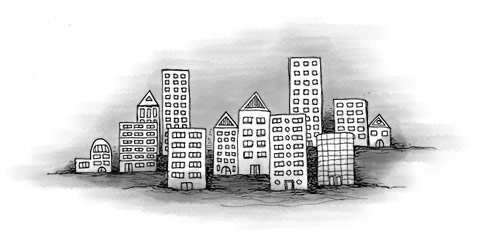The cost of accommodation usually consumes a third of the average American household budget. In areas where property and rental prices are higher, such as major city centers, this can be 50%. The type of accommodation required by many foreigners can be especially expensive: furnished or at least partly-furnished apartments rented at short notice and for relatively short periods of time.
If your destination is a large metropolis you might have a hard time finding an affordable place to live at all. This is especially true for New York, San Francisco and Los Angeles. Often you may have to choose between a tiny apartment in the city center and more spacious accommodation in the suburbs (and a long commute if working or studying in the center).
The area you live in will have a huge impact on the quality of your life in the Unites States of America. Some poorer neighborhoods are simply no-go areas due to high levels of crime and substandard public services (such as schooling and transport). The best areas - those with low crime and the best public schools - are in high demand. This translates to higher rental prices and less choice.
Many landlords require a one-year lease contract as minimum. Take your time and try to visit as many places as possible, and make sure you have read the small print before signing a contract. In some American cities there are ‘rental control’ laws which stipulate the maximum that can be charged for an apartment based on its size and location. This amount is sometimes well below what the owner might be able to get if they could dictate the price themselves. Note that furnished accommodation doesn’t fall under these laws, meaning the owner is free to set whatever price they want.
If you find a place you like but the rent is on the expensive side, try to negotiate. You should also take into account any extras such as maintenance and snow removal (your rental contract might force you to do this yourself). In some cases the rental fees include gas and hot water, but usually electricity is billed as extra.
Supply and demand can vary at different times in the year, particularly in cities with a large student population. At the beginning of a term, typically in March/April and September/October, there is usually a high demand for accommodation, so finding a place to live can be more time-consuming. Try to view as many available apartments as possible so you’ll have a good feel for the market. Compare your options closely and be prepared to act quickly when you find something you like.


